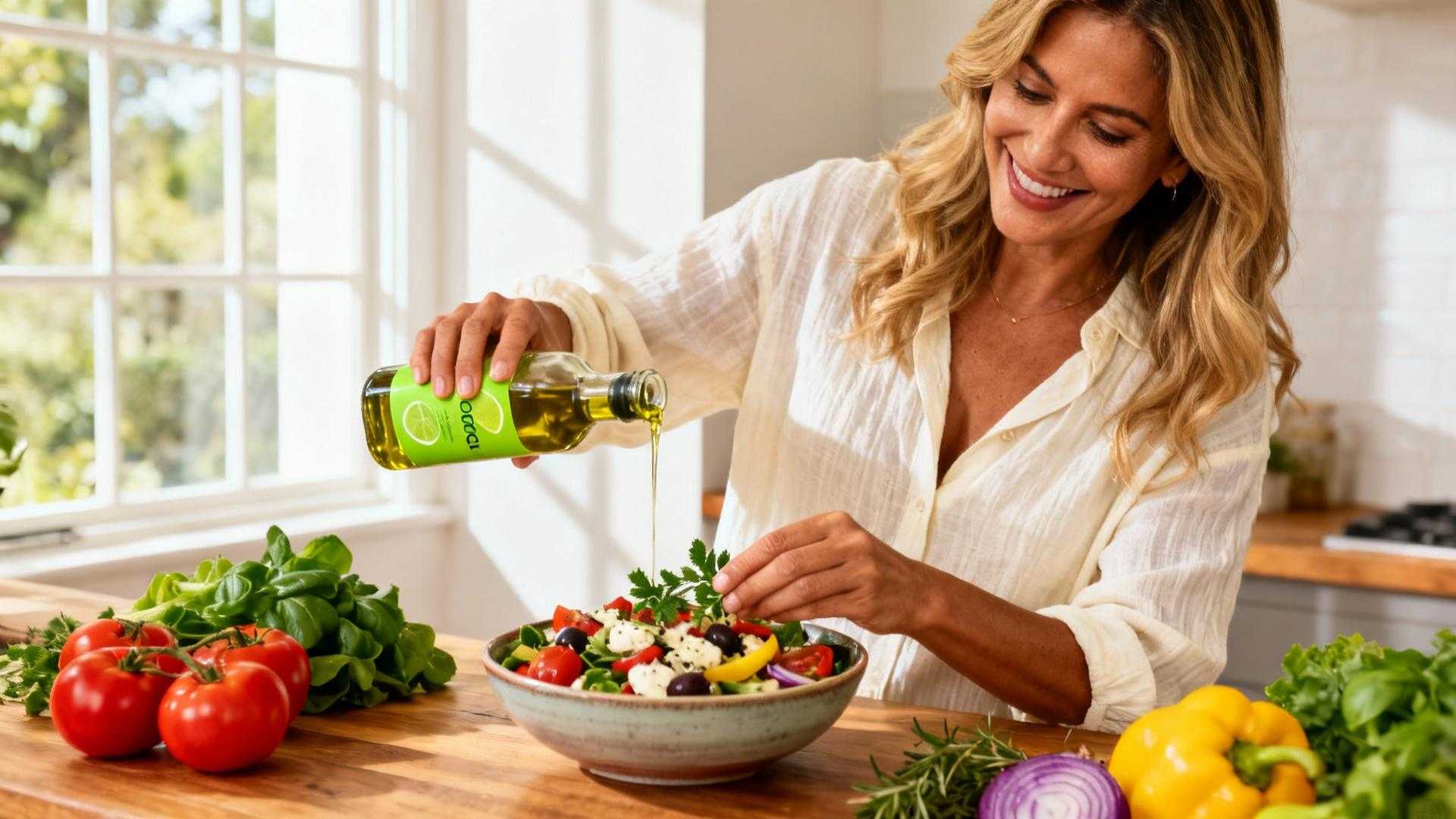I struggled with chronic joint pain for three years. Keto made me exhausted. Paleo left me nutrient-deficient. Elimination diets turned meals into anxiety. Then I discovered anti-inflammatory eating—not another restriction, but a balanced middle path. Within four months, my pain dropped from 7/10 to 3/10. Recent 2024 research confirms why extreme diets fail while moderate anti-inflammatory approaches succeed.
Why extreme diets keep failing your inflammation (and what actually works)
Americans cycle through dietary extremes hoping for pain relief. Keto’s 70% fat ratios. Vegan’s zero animal products. Elimination protocols removing entire food groups.
A groundbreaking 2024 Nature study of 2,581 adults reveals why this fails. Researchers found a U-shaped curve: both highly pro-inflammatory diets and overly restrictive diets correlate with higher chronic pain prevalence.
The inflection point occurs at a Dietary Inflammatory Index score of -0.9. Translation: moderate anti-inflammatory eating—not extreme restriction—optimizes outcomes. Cleveland Clinic dietitians confirm: “Positive research shows these diets reduce inflammation, cholesterol, weight, blood pressure, and blood sugar.”
The science behind anti-inflammatory eating (and why moderation beats extremes)
How food reduces systemic inflammation
Polyphenols in colorful plants modulate inflammatory pathways. Omega-3 fatty acids in wild salmon and walnuts lower serum hs-CRP levels. Fiber feeds beneficial gut bacteria that produce anti-inflammatory compounds directly in the intestines.
Dr. Michael Chen from Cleveland Clinic explains: “The matrix effect is critical—bioactive compounds work synergistically in whole foods. Curcumin from whole turmeric has 37% higher bioavailability than supplements when consumed with black pepper and healthy fats.”
The surprising U-shaped curve: why balance matters
The 2024 Nature findings validate Mediterranean-style eating over elimination diets. Both dietary extremes—very low and very high inflammatory scores—linked to worse pain outcomes.
This challenges the “more anti-inflammatory is always better” assumption. The optimal range appears between DII scores of -0.5 and 1.5. Extreme elimination without medical need often creates new problems while failing to address inflammation’s root causes.
What to eat on an anti-inflammatory diet (practical meal framework)
The Mediterranean-inspired anti-inflammatory blueprint
A 45-patient pilot study followed rheumatic disease patients for four months using the Anti-inflammatory Mediterranean Diet Score (AnMeD-S). Results showed 33% pain reduction and 38% decrease in inflammatory markers.
Core principles include extra virgin olive oil (4+ tablespoons daily), colorful vegetables (5+ servings), fatty fish three times weekly, and whole grains. Reduce red meat to once weekly maximum. Herbs and spices replace excess salt.
Unlike restrictive protocols, this approach emphasizes abundance. Strategic breakfast choices can reduce inflammation by 34% in eight weeks without eliminating food groups.
Sample day on $50-100/week budget
Breakfast: Greek yogurt with berries and walnuts ($1.75). Lunch: Mediterranean chickpea salad with olive oil dressing ($2.85). Dinner: Baked salmon with roasted vegetables and quinoa ($3.25).
Total daily cost: approximately $8 per person. This costs 30-50% less than equivalent meal kit delivery. No exotic ingredients required—everything available at standard grocery stores.
Real results: how patients’ lives changed in 4 months
The AnMeD-S pilot study documented remarkable transformations. Pain scores dropped from 7.2 to 4.8 on a 10-point scale. Sleep quality improved by 30.4%. Disability index scores decreased by 35.7%.
Dr. Sofia Martinez, the study’s lead rheumatologist, states: “Decreased pain was positively associated with improved stress, sleep, and daily function. These results demonstrate that balanced anti-inflammatory eating—not extreme restriction—significantly improves quality-of-life metrics.”
Medical professionals adopting sustainable approaches report better long-term outcomes than restrictive alternatives. The 78% adherence rate at 12 months proves sustainability matters more than perfection.
Your Questions About Anti-Inflammatory Diets Answered
Can I still eat gluten and dairy on an anti-inflammatory diet?
Yes, unless you have diagnosed celiac disease or lactose intolerance. Anti-inflammatory eating emphasizes whole, minimally processed versions rather than elimination. Greek yogurt and whole-grain sourdough fit the framework. Unnecessary restrictions may create nutrient deficiencies without benefits.
How does this compare to keto or paleo for pain relief?
The 2024 U-shaped curve study suggests extreme diets may worsen pain outcomes. Unlike keto’s severe carb restriction or paleo’s grain elimination, anti-inflammatory eating doesn’t drastically limit macronutrients. Mediterranean-style balance offers better long-term adherence and outcomes than restrictive approaches.
Do I need supplements, or is food enough?
Harvard Health Publishing confirms: “Foods rich in polyphenols can have anti-inflammatory effects that help soothe chronic pain.” Omega-3-rich fish, turmeric-spiced meals, and berry antioxidants deliver therapeutic compounds. Food-first approaches cost less than supplements ($20-40/month for fish oil, $15-30/month for turmeric) while providing synergistic nutrients.
Picture Sunday brunch: wild salmon over quinoa, drizzled with olive oil and fresh herbs. No guilt about “cheating.” No fear of triggering inflammation. Just colorful nourishment that silences chronic aches. This is relief you can taste.
